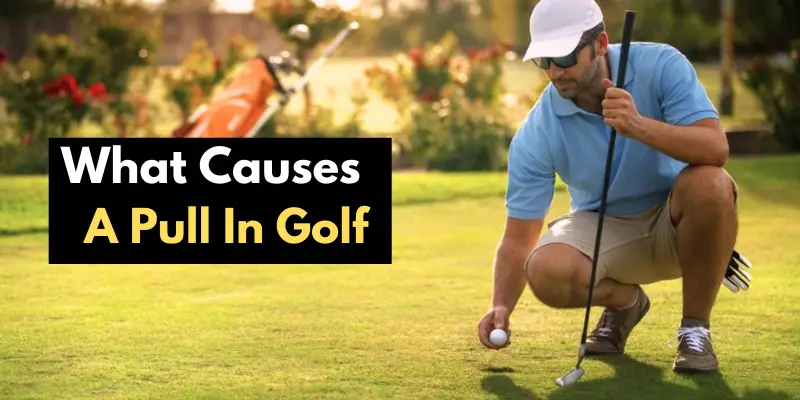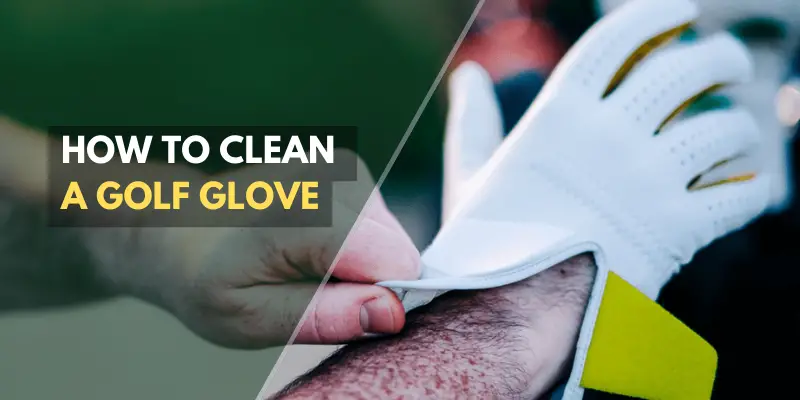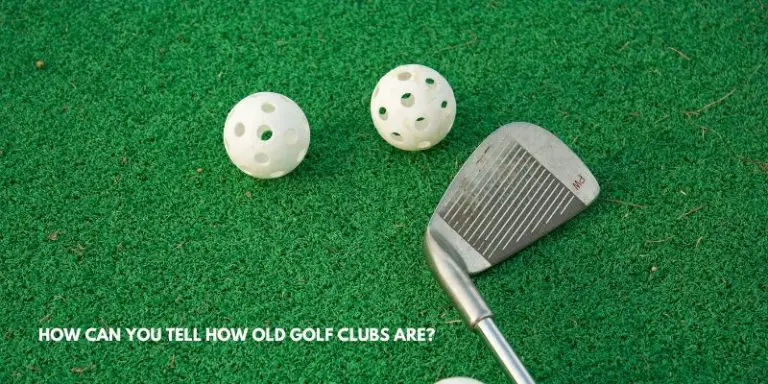What Causes a Pull in Golf – 4 Main Reasons
Golf is a game of precision and accuracy, where every small detail can distinguish between a good shot and a bad one.
One common problem golfers face is the dreaded “pull,” where the ball veers to the left (or right for left-handed golfers). But what causes this frustrating shot?
A pull in golf is primarily caused by a closed clubface at impact and an inside-to-out swing path, resulting in the ball veering to the left (for right-handed golfers).
We’ll explore the major reasons behind what causes a pull in golf, including clubface alignment, swing path, hand position, weight transfer, and more.
Plus, we’ll share some tips on how to correct your pull and improve your overall game. So grab your clubs, and let’s get started!
What causes a pull in golf – Major Reasons
Clubface alignment, swing path, hand position, weight transfer – all of these factors can play a role in causing a pull shot in golf. Let’s take a closer look at each one.
Clubface Alignment:
When your clubface is closed (pointing left) at impact, it will also cause the ball to turn left as well. This can happen if you grip the club too tightly or your setup is incorrect.
Swing Path:
Next comes the swing path. An inside-to-out swing path (where the clubhead approaches the ball from inside the target line and then moves outwards) can also result in a pull shot.
Hand Position:
Hand position is another factor to consider. If your hands are too far forward at impact, this can lead to an open clubface and a pulled shot.
Weight Transfer:
Weight transfer also plays an important role in determining the direction of your shots. If you shift too much weight onto your front foot during your downswing, this can cause you to come over the top of the ball and produce a pull shot.
By understanding these major reasons behind pulls in golf, you’ll be better equipped to diagnose and correct any issues with your game.
The different types of pulls in golf
When it comes to golf, a pull is one of the most frustrating shots for any golfer. A pull happens when the ball starts left of its intended target line and continues in that direction throughout its flight. However, there are different types of pulls in golf that can occur.
- One type of pull is caused by clubface alignment at impact. When the clubface is closed relative to the swing path, it leads to a straight or hooking shot toward the left as a right-handed player.
- Another common cause for pulling shots in golf is incorrect swing path inside-to-out, causing an out-to-in clubhead travel pattern during impact with the ball leading it off-target to your left side.
- Hand position can also be responsible for pulling shots. An overly strong grip leads to the closing down of the face, which causes pulls while driving or iron strokes.
- Weight transfer issues can also lead to pulls since not shifting weight forward on the downswing may leave hands behind hips, causing an outside-in swing path.
- Poor alignment, such as aiming too far left, sometimes results in overcompensation resulting in excessive inward swings, thus generating pulled shots.
It’s essential for every golfer who experiences frequent pulls on their shots to understand what kind they are experiencing so they can address them correctly and improve their game.
How to correct a pull in golf
Correcting a pull in golf can be a daunting task, but with the right techniques and practice, it’s possible to fix your swing.
One of the first things you should check is your clubface alignment. A closed clubface at impact tends to cause a pull shot. Open up your clubface slightly on address or grip pressure for more control.
- Another factor that may contribute to pulling the ball is an inside-to-out swing path. Swing too much from the inside, and you’ll produce hooks or pulls instead of straight shots.
- Hand position also plays an essential role in correcting a pull shot. Check if you have too strong of a grip by looking down at your hands during setup. Too strong of a grip results in turning over the hands through impact, leading toward bad shots like pulls.
- Weight transfer throughout your swing can help correct this issue as well. Ensure you’re shifting weight onto your front foot before striking to ensure contact with less spin off-line.
- Alignment errors such as standing too far left (for right-handed golfers) can lead to pulls as well; make sure that both feet are positioned parallelly with the target line allowing for better ball flight control.
- Lastly- good clubface control while providing excellent takeaway will prevent future mishits from happening due to incorrect swing mechanics, which leads to poor shot correction skills.
Pros and cons of different corrective measures
When it comes to correcting a pull in golf, there are several measures you can take. However, each measure has its own pros and cons that must be considered before deciding on the best course of action.
| Corrective Measure | Pros | Cons |
| Clubface Alignment | – Relatively easy to implement | – Incorrect alignment may lead to other shot issues like slice or hook |
| Swing Path | – Can help straighten out shots | – Requires significant adjustments to swing mechanics |
| Hand Position | – Constant tinkering may introduce an inconsistency | – Constant tinkering may introduce inconsistency |
| Weight Transfer/Alignment | – Improves shot accuracy and balance | – Not a direct fix for pulls, but aids overall swing stability |
In summary, every corrective measure has its advantages and disadvantages; finding what works for you will depend on personal preference as well as how much time you’re willing to invest into making those necessary modifications toward improvements.
Conclusion
A pull shot in golf can be caused by various factors such as clubface alignment, swing path, hand position, weight transfer and alignment. Identifying the cause of your pull is crucial to correcting it effectively.
To fix a pull shot in golf requires practice and patience. You may need to work on your swing mechanics or adjust your shot correction technique depending on the underlying cause of your pull.
It’s essential to seek professional help when you’re struggling with pulling shots consistently. By taking lessons from an experienced instructor or booking a session with a certified club fitter, you can get tailored advice.
Remember that fixing a pull in golf isn’t always easy; it takes time and effort. But by focusing on the different types of pulls and their causes outlined above, you’ll be well-equipped to start working towards straighter shots on the course.
FAQs:
Why am I pulling my wedges?
To avoid pulling your wedges:
- Check clubface alignment at impact.
- Correct an inside-to-out swing path.
- Ensure a neutral grip and hand position.
- Focus on proper weight transfer and balance in your swing.
How do you hit a golf ball lower with a driver?
To hit a golf ball lower with a driver:
- Tee lower
- Ball back in stance
- Steeper swing
- Controlled tempo
- Consider lower loft or adjust loft settings.
How do I know if my driver is too upright?
To know if your driver is too upright:
- Check the impact pattern on the clubface.
- Assess ball flight, particularly if it goes left (for right-handed golfers).
- Consider professional club fitting.
Does hitting off the toe cause a hook?
No, hitting off the toe of the club generally causes a shot to go to the right (for right-handed golfers), rather than causing a hook.
Does the toe or heel cause slice?
Hitting off the heel of the club tends to cause a slice (a shot that curves to the right for right-handed golfers), while hitting off the toe can lead to a shot that goes to the left.







One Comment